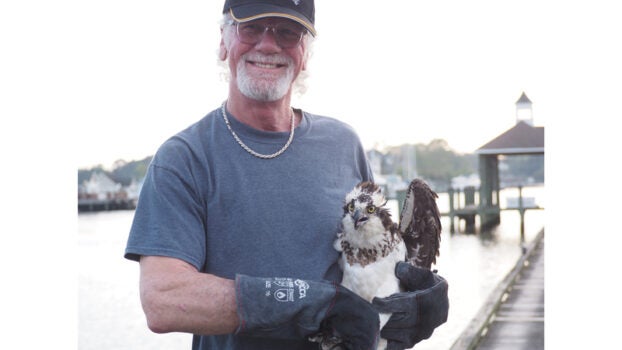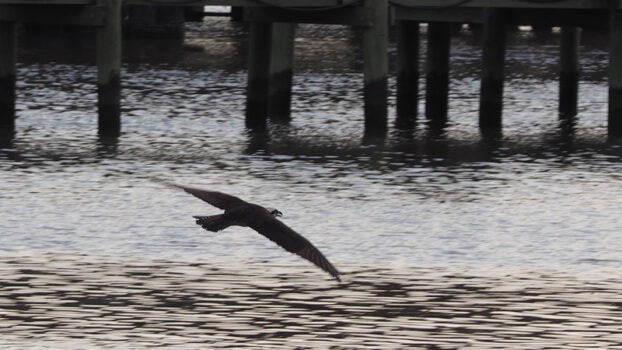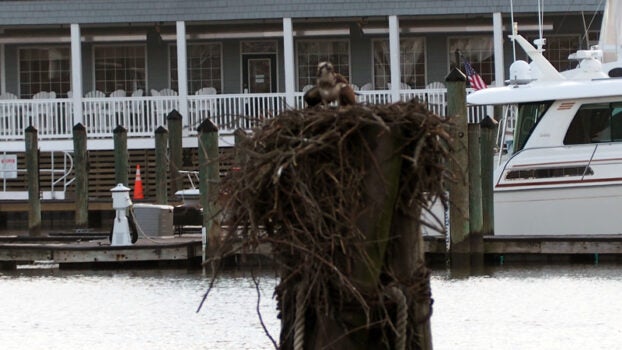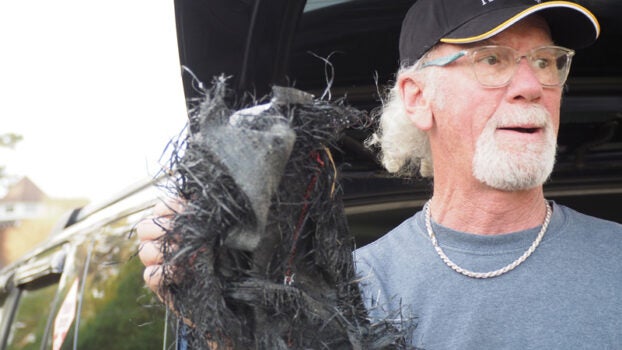Pagan River osprey that fell from nest reunited with mate
Published 4:23 pm Tuesday, April 16, 2024
Thomas and Suzan Askew spent a weekend listening to the sound of “Ozzy” pining for “Sharon,” only to hear his frequent chirping go unanswered.
They’re the names the Askews have given to two ospreys occupying a nest visible from the couple’s dock overlooking the east bank of the Pagan River. According to the Chesapeake Conservancy, ospreys mate for life and return to the same spot year after year despite spending the winter apart.
Tim Curtis of the Virginia Beach-based Tidewater Wildlife Rescue reunited the pair on April 15 after finding the female a day earlier flat on her back on the ground, wings extended, and struggling to breathe. The all-volunteer organization provides medical care to orphaned and injured animals across Southeastern Virginia.
“Finding this bird was absolutely a miracle,” Curtis said. “She probably would have died in a couple days.”
Terri Cuthriell, a volunteer who monitors several osprey nests in Smithfield, had alerted the Tidewater Wildlife Rescue while making her rounds through town on April 13, when she saw the female frantically trying to dislodge what appeared to be a scrap of weed mat or lawnmower bag from her wing and foot. Curtis however, was a 2½-hour drive away at the time attending the Osprey Festival in Colonial Beach on Virginia’s Northern Neck. By 8 a.m. the next day, the female was nowhere to be found.
Finding qualified people available to respond at any hour of the day at a moment’s notice is a frequent challenge for the organization, Curtis said. But as fate would have it, Curtis received a second alert that weekend, again sending him to Isle of Wight County on Sunday – this time for an injured heron on the James River.
Homeowners Ross and Robbie Younger, who’d called about the heron, were able to retrieve the bird using Curtis’ net and Ross’ parasailing wetsuit.
Already in the area, Curtis decided to drive by the osprey nest. He made contact with the Askews, who told him they hadn’t been the ones who’d called, and was about to report back that he didn’t see the osprey when, after turning onto a dead-end street, he found her.
“I thought she was choking,” Curtis said. “Her head was swinging like a pendulum.”
But once he cut the fabric from her wing and foot and put her in a crate, she surprised him by immediately standing up.
“Raptors cannot be upside down or laid flat because their diaphragm can collapse and choke them,” Curtis said. “Birds are designed to stand straight up; they’re not designed to lay down on their backs like humans.”
Curtis couldn’t tell how long the osprey had been lying on the ground when he found her, nor what had caused her to fall. It had been a particularly windy day when Cuthriell observed the bird struggling with the fabric scrap, which she recalled had acted like a sail in the breeze and was blowing the bird around involuntarily.
The osprey could have been attempting to add the fabric to her nest when she became entangled, Cuthriell speculated.
“These birds, if you drive around town, there’s plastic bags in their nests; for some reason they’re attracted to this stuff.”
The Tidewater Wildlife Rescue ultimately determined the osprey to be uninjured. The heron, however, has a damaged wing that will need to heal before the bird can be released.
Curtis, who performs state motor vehicle inspections by day, has been a volunteer with the organization for three years.
Curtis said he’s always been interested in birds, particularly raptors.
“I’m a big red-tailed hawk fan,” he said. “They’re just fascinating animals.”
He’s made the three-hour drive to Waynesboro multiple times to take birds to the Wildlife Center of Virginia, a nonprofit animal hospital whose staff, in 2023, returned a bald eagle to the wild in neighboring Surry County that had been found severely injured seven months earlier in Smithfield.
Volunteers like Curtis go through a training program to learn how to safely handle raptors, and even then can still make mistakes. He has a scar from a red-tailed hawk to prove it.
“When you get a raptor, the first thing you need to take control of is the feet, not the beak; it’s the feet that are the weapon,” Curtis said.
A bald eagle’s talons, for example, can apply up to 500 pounds per square inch in pressure.
“Each breed of bird has, like, a different personality,” Curtis said.
Some birds in long-term rehabilitation can even “remember who you are,” he said.
But for “Sharon,” there was no doubt when Curtis released her on the Askews’ dock where she belonged. She flew right back to “Ozzy” and her nest.









